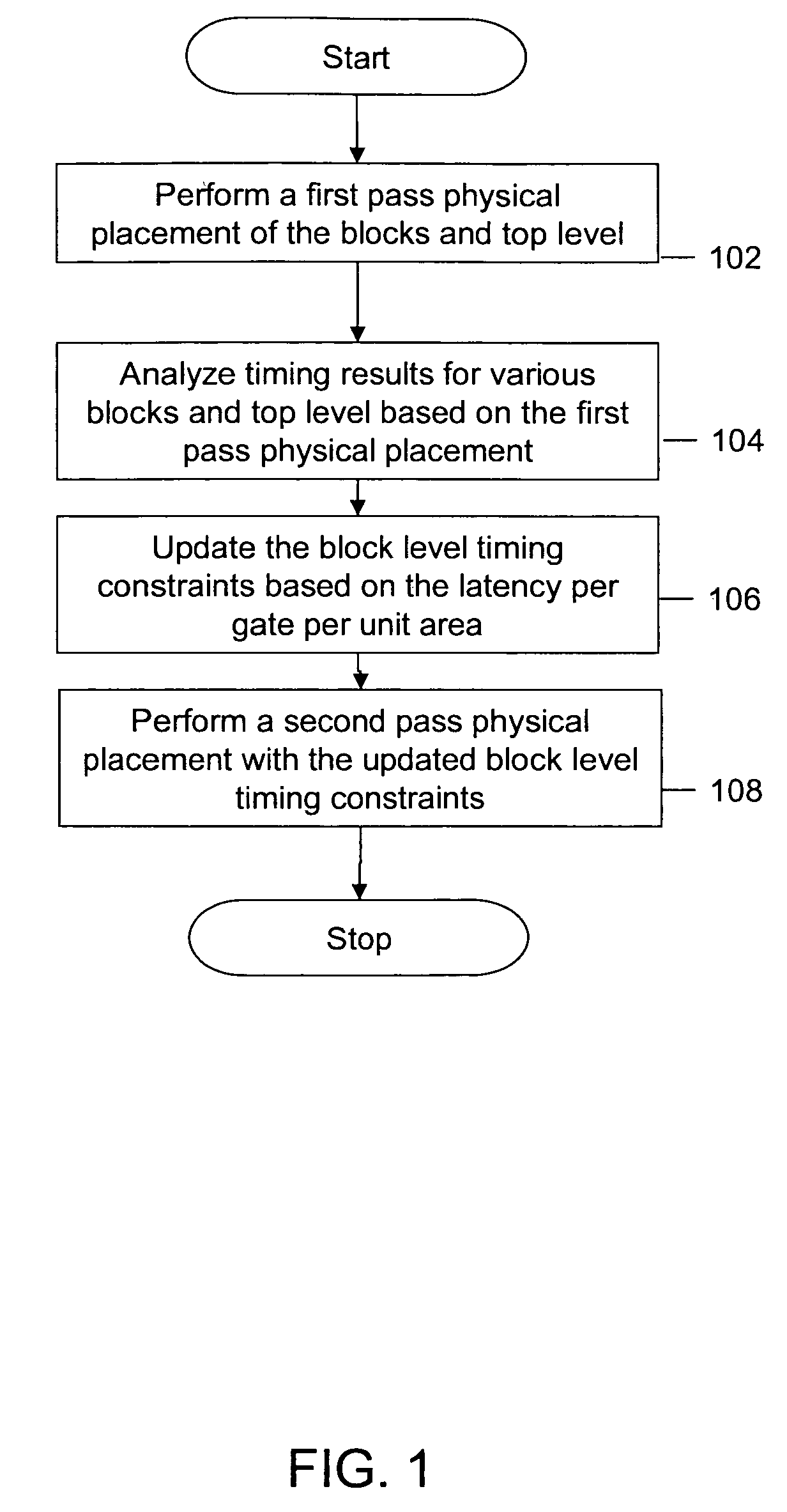Method for physical placement of an integrated circuit based on timing constraints
a timing constraint and integrated circuit technology, applied in the field of integrated circuits, can solve the problems of complex operation of designing an integrated circuit with millions of logic gates, non-optimal timing, and difficult timing closur
- Summary
- Abstract
- Description
- Claims
- Application Information
AI Technical Summary
Benefits of technology
Problems solved by technology
Method used
Image
Examples
Embodiment Construction
[0013]Various embodiments of the invention provide a method, a system, and an apparatus for physical placement of an integrated circuit based on timing constraints. The method involves a two-pass physical placement technique, which results in the optimal placement of all inter-block paths in the IC. After the first pass of the physical placement of the blocks and the top level, the timing results of the top level and of each block are analyzed. The method involves the computation of latency per gate per unit area (LPGA) of each block port of each block in the IC. Based on the calculated LPGA, the timing constraints of the blocks are updated. The second pass of physical placement is performed, based on the updated timing constraints.
[0014]A timing budget is a distribution of the available time for a signal to reach from a first node in a path to a second node in the path. Examples of node may include a flip-flop (FF), a logic gate, and the like. Various timing budgets can exist for v...
PUM
 Login to View More
Login to View More Abstract
Description
Claims
Application Information
 Login to View More
Login to View More - R&D
- Intellectual Property
- Life Sciences
- Materials
- Tech Scout
- Unparalleled Data Quality
- Higher Quality Content
- 60% Fewer Hallucinations
Browse by: Latest US Patents, China's latest patents, Technical Efficacy Thesaurus, Application Domain, Technology Topic, Popular Technical Reports.
© 2025 PatSnap. All rights reserved.Legal|Privacy policy|Modern Slavery Act Transparency Statement|Sitemap|About US| Contact US: help@patsnap.com



